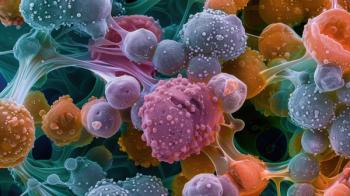
IDH Inhibitor Use in Patients with Relapsed or Refractory AML
In this clip, Bernard Marini, PharmD, BCOP, inpatient hematology specialist at the University of Michigan, discusses how IDH inhibitors like ivosidenib and enasidenib fit into the treatment landscape for patients with relapsed or refractory acute myeloid leukemia.
In this clip, Bernard Marini, PharmD, BCOP, inpatient hematology specialist at the University of Michigan, discusses how IDH inhibitors like ivosidenib and enasidenib fit into the treatment landscape for patients with relapsed or refractory acute myeloid leukemia (AML).
Transcript
As single agents, our IDH inhibitors ivosidenib and enasidenib, their responses as single agents are modest at best. You’re looking at CR [complete response] rates of about 20%, but in combination with therapies like hypomethylating agents, we’re likely to see increased response rates in that setting. And that will make these IDH inhibitors a more attractive option for relapsed/refractory patients because you’re combining it with an agent like hypomethylating agents that also have significant activity in AML.
Newsletter
Stay informed on drug updates, treatment guidelines, and pharmacy practice trends—subscribe to Pharmacy Times for weekly clinical insights.


















































































































































































































